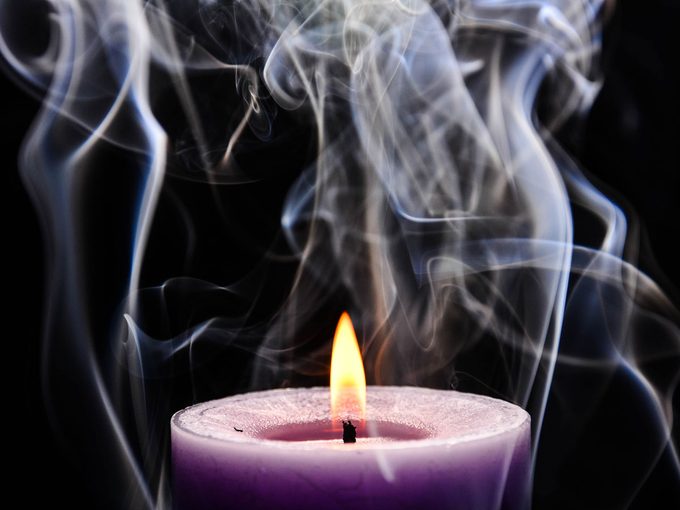What You Need to Know Before You Light That Next Candle
Burning a candle seems like a harmless indulgence. New research suggests otherwise.

Is candle smoke bad for you?
Who doesn’t love curling up next to a flickering candle flame. Lighting a candle is the easiest way to set the mood, create a relaxing atmosphere, or just make your home a little cozier. But if you’ve ever wondered, “Is candle smoke bad for you?” you’re not the only one. Apparently, the smoke from a burning candle could be as toxic as those from cigarettes or even diesel exhaust fumes.
When you think about the dangers of a burning candle, it’s probably the risk of a fire that comes to mind, not whether or not you should be inhaling candle smoke. As it turns out, both of these are valid risks and concerns that have come to light with our recent fascination with hygge, the art of being cozy. According to The Guardian, Denmark (known as one of the happiest countries in the world, and where hygge originated) has a real problem with house fires. But the bigger health concern is definitely candle smoke inhalation.
The health impact of candle smoke
A study by scientists at Copenhagen University conducted on mice found exposure to particles from burning candles to cause greater damage than the same dose of diesel exhaust fumes. The harmful effects of candle smoke included lung inflammation and toxicity, arteriosclerosis, and ageing effects on chromosomes in the lungs and spleen.
Ultimately, this all leads to an increase in particulate air pollution (specifically, indoor air pollution). In Denmark (where candle usage is high), research has shown that 60 percent of ultra-fine particles in Danish homes come from burning candles. According to the Danish Lung Association, Danes burn on average 3.5 kg of candles every year!
We don’t have statistics for how often Canadians burn candles but that doesn’t change the potential health risks that could come as a result of candle smoke inhalation. And the concern isn’t necessarily new. A 2009 study by U.S. researchers found that paraffin-based candles release carcinogens and chemicals that could raise the risk of asthma.
Dr. Amid Hamidi from the University of South Carolina, who led the study, says the results showed paraffin-based candles produce several chemicals, mainly because they do not burn at a high enough temperature to destroy the hazardous molecules they emit, reports the Daily Mail. “An occasional paraffin candle and its emissions will probably not affect you,” he said. “But lighting many of them every day for years, or lighting them frequently in an unventilated bathroom, for example, may cause problems.” (See, you can relax – a little.)
Additional research from the U.S. Environmental Protection Agency finds scented candles to produce more soot than unscented, the particles of which can infiltrate deep into your lungs and be harmful to your respiratory system. And the wick matters, too. A longer candle wick will produce more soot and a smoky flame, which releases even more air pollution. So yes, candle smoke is bad for you and your lungs.
Better candle options
But if you can’t imagine a bubble bath without the flicker of a soothing candle, you’re not doomed. As with most things, moderation is key. According to experts at the British Lung Foundation, the occasional burning of scented candles is unlikely to cause problems, as it’s repeated exposure and burning in unventilated areas that is most harmful. Always burn your candles in a well-ventilated area and try to choose candles made from beeswax or soy, as these types were found to cause less indoor pollution than paraffin-based candles. Another option for bringing a calming fragrance into your home is aromatherapy and essential oils, which in addition to being safer, have their own health benefits as well. Or, you could try these tips for unwinding after a stressful day.




